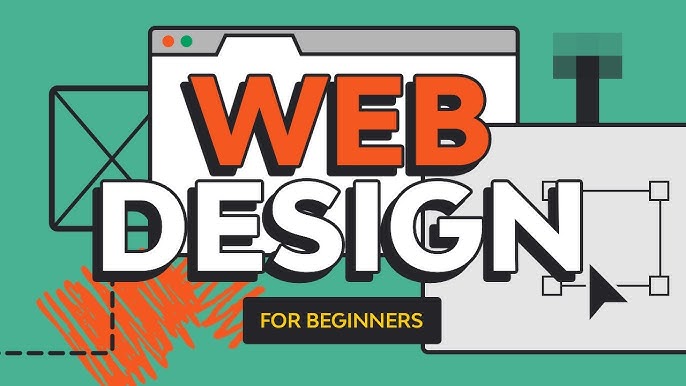Aligned Position Web Design: Perfectly Designed Websites to Capture Your Audience’s Attention
The Most Effective Types of Website Design to Boost Individual Experience and Involvement
In the ever-evolving landscape of electronic interaction, the performance of website design significantly influences user experience and engagement. Various design techniques, such as minimal, receptive, and interactive formats, each offer distinct benefits that can deal with diverse user demands. Comprehending which kinds of website design best offer these purposes can be pivotal for businesses aiming to improve consumer complete satisfaction and retention. The concern continues to be: which layout components truly resonate with individuals and foster significant interaction? The expedition of these concepts exposes crucial insights that may redefine your method to Web design.
Minimalist Website Design
As electronic landscapes become progressively chaotic, minimal Web design has become an effective technique to improving user experience. This design viewpoint focuses on simpleness, concentrating on necessary components while getting rid of unneeded interruptions. By making use of sufficient white area, simple navigation, and a restricted color palette, minimalist design cultivates clarity and guides customer focus to essential material.
The core principle of minimalist Web style is to produce a smooth communication for individuals. By decreasing cognitive tons, individuals can quickly understand details without feeling bewildered. This straight strategy not just improves use yet also urges involvement, as site visitors are more probable to discover a website that is simple and aesthetically attractive to navigate.
In addition, minimalist style typically emphasizes typography and images, using these aspects strategically to share messages effectively. In essence, minimalist Web style is not just a fad; it is a thoughtful technique that recognizes the significance of user-centered style.
Responsive Web Design
In today's varied electronic atmosphere, receptive Web layout has actually ended up being important for creating a seamless customer experience across a plethora of tools. As customers access websites on smartphones, tablets, desktop computers, and laptops, the ability of a website to adjust its layout and material to different display dimensions and resolutions is vital.
Receptive Web layout uses flexible grids, photos, and CSS media inquiries to make certain that Web content is presented optimally, despite the device made use of. This method not just enhances the aesthetic allure of an internet site yet also significantly enhances usability. Customers are much more likely to involve with a site that uses a constant experience, as it gets rid of the aggravation of having to focus or scroll exceedingly.
In addition, online search engine, including Google, focus on mobile-friendly sites in search rankings. By adopting receptive style, companies can boost their presence and get to a broader audience. This strategy likewise streamlines site upkeep, as a solitary version of the website can deal with all devices, minimizing the requirement for multiple versions. In recap, responsive website design is an essential method that improves individual experience, interaction, and total fulfillment.
Interactive Website Design
Receptive Web style lays the groundwork for enhancing individual experience, but interactive Web design takes this an action additionally by involving users in an extra vibrant means - Aligned Position Web Design. By integrating components such as computer click here for more animations, clickable models, and real-time feedback, interactive Web layout mesmerizes individuals, drawing them right into a richer surfing experience
This strategy not only promotes engagement yet likewise urges users to discover content proactively rather than passively eating it. Techniques such as gamification, where individuals gain benefits for finishing jobs, can significantly improve the time invested on a website and boost overall complete satisfaction. Interactive features can streamline intricate info, making it a lot more digestible and pleasurable.

Incorporating interactive layout components can likewise bring about higher conversion rates, as individuals are more most likely to involve with a site that actively entails them. Aligned Position Web Design. Inevitably, interactive Web design transforms customer experiences into memorable journeys, guaranteeing that site visitors return time and once again
Apartment Design
Characterized by its minimalistic strategy, flat layout highlights simpleness and functionality, removing unnecessary components and concentrating on vital functions. This style philosophy focuses on use, making sure that customers can browse interfaces with simplicity and efficiency. By employing a clean visual, flat layout eliminates the clutter typically found in extra elaborate designs, thus boosting individual concentrate on material and performance.
The hallmark of flat design hinges on its use bold colors, basic typography, and geometric shapes. These elements add to why not find out more an aesthetically attractive interface that is both friendly and modern-day. Furthermore, level layout promotes a sense of clearness, enabling customers to determine crucial activities and info without interruption.
Moreover, level style is particularly efficient in responsive website design, as its simpleness translates well across different devices and display sizes. The absence of complex appearances and gradients lessens packing times, which is important for preserving individual interaction. As digital landscapes proceed to advance, level layout stays a pertinent selection for developing easy to use internet sites that boost general experience. By focusing on crucial functions, flat style not just meets user requirements however also urges smooth interaction, making it an important part of efficient website design methods.
Adaptive Web Layout
Flexible website design personalizes the customer experience by producing multiple fixed designs tailored to different screen sizes and devices. Unlike responsive layout, which fluidly changes a solitary layout, flexible design utilizes distinct designs for specific breakpoints, ensuring optimal presentation on various systems. This technique allows developers to focus on the special qualities of each gadget, improving use by supplying exactly what individuals require based on their context.
Among the main benefits of adaptive Web design is its capability to optimize lots times and efficiency. By serving tailored material and photos that fit the individual's gadget, web sites can minimize data usage and boost loading rates. This is especially useful for users with slower connections or restricted data plans.

Additionally, adaptive layout assists in a pop over to this site much more controlled and constant branding experience. Given that designers produce several formats, they can ensure that the aesthetic components line up with the brand name's identification throughout various systems - Aligned Position Web Design. This leads to a natural individual experience, boosting interaction and promoting user retention
Final Thought
Minimal style fosters clearness and focus, while responsive design guarantees versatility across numerous devices, advertising ease of access. Jointly, these style approaches add to the development of easy to use environments that not only improve satisfaction yet also drive greater conversion rates, underscoring their essential importance in modern Web layout techniques.

Minimalist layout fosters quality and focus, while receptive layout makes certain flexibility across different devices, promoting ease of access. Jointly, these layout approaches add to the production of user-friendly environments that not just enhance complete satisfaction however likewise drive greater conversion prices, emphasizing their critical relevance in contemporary Web layout strategies.